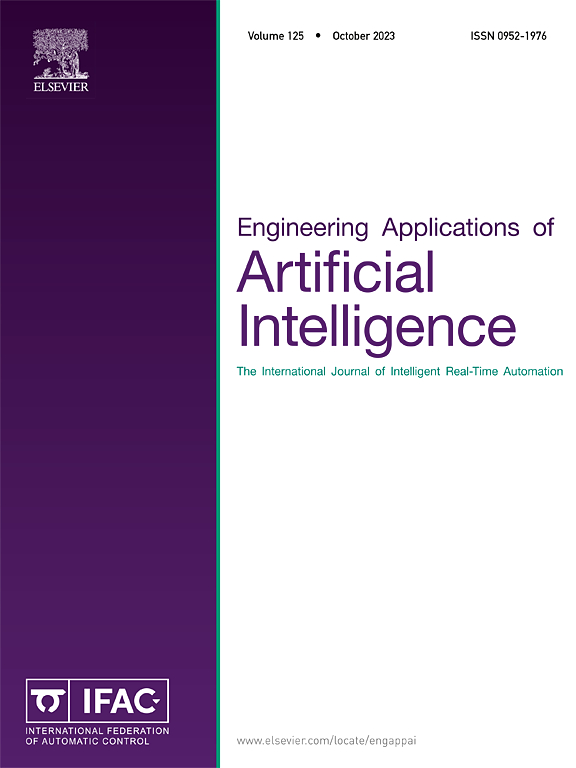Three-level-fused attribute reductions based on three-view uncertainty measures of three-view weighted neighborhood rough sets
IF 7.5
2区 计算机科学
Q1 AUTOMATION & CONTROL SYSTEMS
Engineering Applications of Artificial Intelligence
Pub Date : 2025-04-03
DOI:10.1016/j.engappai.2025.110644
引用次数: 0
Abstract
Attribute reductions facilitate classification learning, and they rely on uncertainty measures related to knowledge granulations of various rough sets. Weighted neighborhood rough sets (WNRSs) introduce attribute weights to optimize granular structures and improve neighborhood models, but their current attribute reductions and corresponding algorithms utilize algebra weights and dependency degrees from only a single algebraic perspective. For enriching WNRSs and their attribute reductions, three-view attribute weights and three-view granulation measures are constructed from algebraic, informational, and algebra-information-fused viewpoints, and thus attribute reductions are systematically proposed to generate heuristic algorithms on three-level fusion. First based on existing algebraic weights, informational weights are supplemented by information entropy, while fused weights are constructed by algebra-information integration; thus, three-view weights induce three-view weighted neighborhood granulations and three-view WNRSs, and the latter’s granulation monotonicity is achieved. Then based on WNRSs and dependency degrees, decision entropies are supplemented by information function on roughness, while fused measures are constructed by multiplication operation; thus, three-view measures are formulated to acquire granulation monotonicity. Furthermore, three-view weights and measures motivate attribute reductions of WNRSs, and heuristic reduction algorithms are systematically designed, thus extending and improving the existing algorithm; in terms of fusion strength, these 9 algorithms exhibit a three-level structure of on non-fusion, single-fusion, double-fusion. Finally through data experiments, relevant uncertainty measures and attribute reductions are validated; all 9 reduction algorithms are comprehensively compared in classification learning, the new algorithms generally outperform the contrastive algorithm, and the double-fused algorithm on fused weights and measures acquires the best performance.
求助全文
约1分钟内获得全文
求助全文
来源期刊

Engineering Applications of Artificial Intelligence
工程技术-工程:电子与电气
CiteScore
9.60
自引率
10.00%
发文量
505
审稿时长
68 days
期刊介绍:
Artificial Intelligence (AI) is pivotal in driving the fourth industrial revolution, witnessing remarkable advancements across various machine learning methodologies. AI techniques have become indispensable tools for practicing engineers, enabling them to tackle previously insurmountable challenges. Engineering Applications of Artificial Intelligence serves as a global platform for the swift dissemination of research elucidating the practical application of AI methods across all engineering disciplines. Submitted papers are expected to present novel aspects of AI utilized in real-world engineering applications, validated using publicly available datasets to ensure the replicability of research outcomes. Join us in exploring the transformative potential of AI in engineering.
 求助内容:
求助内容: 应助结果提醒方式:
应助结果提醒方式:


